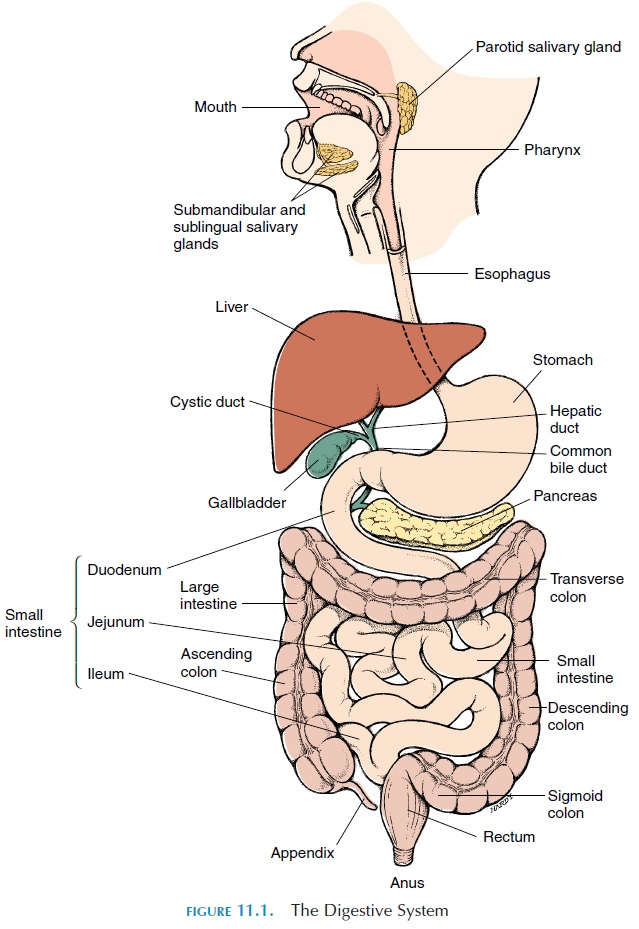Chapter: The Massage Connection ANATOMY AND PHYSIOLOGY : Digestive System
Small Intestine - Structure and Function of Digestive System
SMALL INTESTINE
The small intestine is a long tube approximately 3 m (9.8 ft) long and less than 2.5 cm (1 in) wide. A major part of the abdominal cavity is, therefore, occupied by the small intestine, with the liver occupying the upper right quadrant of the abdomen and the stom-ach, the epigastric region. About 90% of absorption occurs in the small intestine.
The intestine is divided into three parts: the duo-denum, the jejunum, and the ileum. The duodenum is the first part of the small intestine, leading off from the stomach. It is C-shaped, with the pancreas nes-tled in the curve of the C. The liver is located superior and lateral to the duodenum. Bile secretions from the liver, after being temporarily stored in the gallblad-der, flow into the duodenum.
The duodenum, unlike the rest of the small intes-tine, does not float freely in the abdominal cavity sus-pended by the mesentery. Instead, the duodenum is in close contact with the posterior part of the ab-domen at levels of L1 and L4 and is considered retroperitoneal (behind the peritoneum).
The jejunum, which is continuous with the duode-num, is 1 m (3.3 ft) long. Most digestion occurs here. The ileum, the third region, is the longest at 2 m (6.6 ft). At its distal end, it has circular smooth muscles— the ileocecal valve. This area of circular smooth muscle regulates the amount of chyme that enters the cecum, the first part of the large intestine.
The walls of the small intestine have numerous in-testinal glands that continue the digestion of food and numerous glands that secrete hormones. About 1.8 liters (1.9 qt) of watery fluid is secreted in the in-testines. An abundance of mucus, secreted by the submucous glands, protects the walls of the gut from digestion by enzymes. Because sympathetic stimula-tion decreases secretion, the duodenum becomes more vulnerable to destruction by chyme and devel-opment of ulcers. This is one association between stress and peptic ulcers.

Related Topics